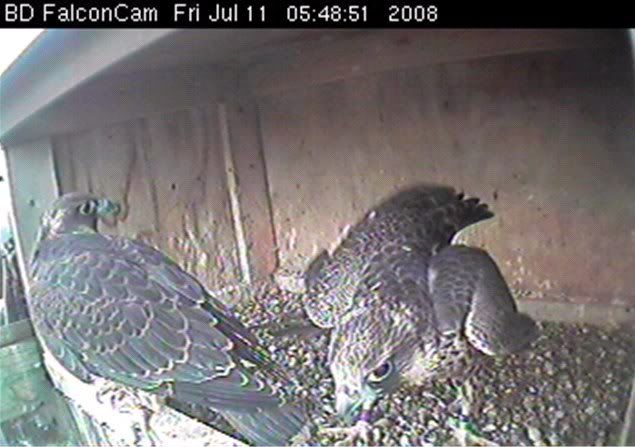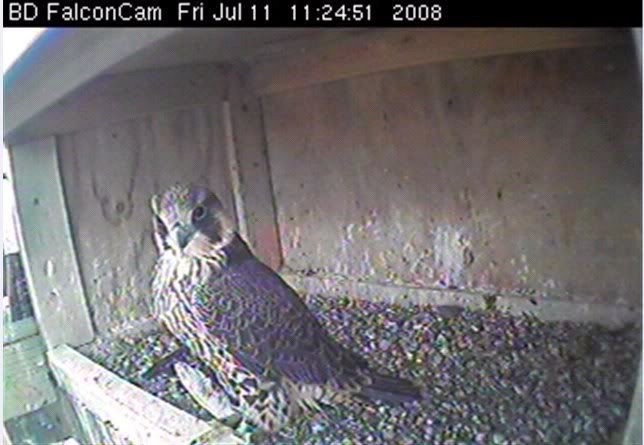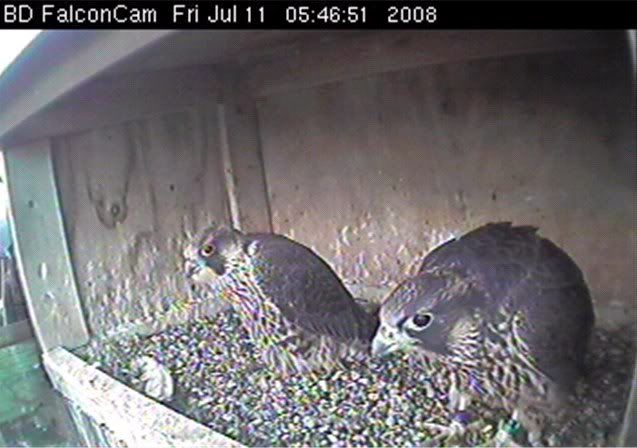
One thing the peregrine falcon does a lot is preening. Many hours each day is spent on the care of feathers, beak, cere and feet. Sometimes it seems like pure vanity, but it is in fact a necessity. Without well preened feathers the peregrine could become soaking wet when it rains, become ill and die. Or feathers that are not well groomed will cause drag when flying.
And when preening they remove parasites from their feathers and skin. Preening eachother helps strengthen realtionships.
So they do spent a lot of time every day on preening their feathers.
When preening birds run their beaks through their feathers or scratching their heads with a toe. Some birds have a special comb-like structure on one toe for this purpose. Feathers have parallel barbs attached to the feather shaft, and many barbules like tiny hooks that latch the barbs together. When barbules detach, a split appears in the vane of the feather. Birds preen to realign the barbs and barbules: during preening, a bird carefully nibbles its way from the base of the feather toward the tip, reattaching the barbules and mending splits.
Birds often preen as well after they’ve been bathing or when the weather is wet, times when feathers need grooming. As well, in hatchlings or molting birds, new feathers (pinfeathers) are wrapped in a tough sheath that must be removed by preening so the feather can open. These activities are not random—a bird works through its feathers methodically, preening them all.
We have seen in the past breeding season, how the eyases where nibbling away the blue-ish shafts in which their feathers where growing.
They are not just nibbling and reattaching the barbs. They do use a very special homemade feather and skincare oil at the same time. This oil is made in the uropygial gland or preen gland which is situated right above the tailfeathers.
Uropygial Gland
The uropygial gland is a bilobed holocrinc gland. It is the principle cutaneous gland of birds. It is present in most species of bird. It is absent in other species, including the ostrich, emu, cassowary, bustard, frogmouth, many pigeons, many woodpeckers and certain species of psittacines.
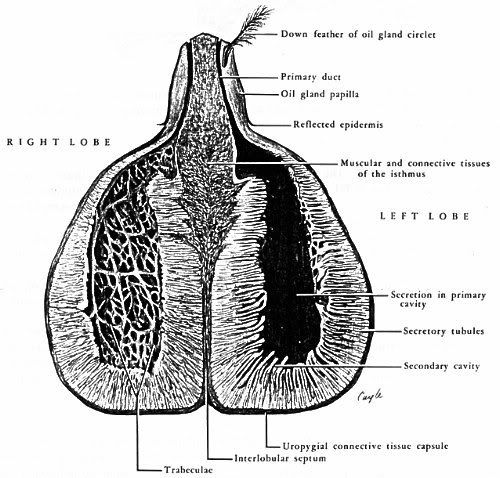
The uropygial gland, lies on the mid-line dorsally on the trunk in the rump area above the levator muscles of the pygostyle. There are no feathers normally on the skin over the gland. There is, however, a tuft of down feathers at the tip of the papilla in most species, and this is called the uropygial wick. In many species of bird including teh peregrine falcon, the tail usually flexes laterally each time the bird reaches around to contact the gland and the wick.
The gland secretion is complex and consists of a combination of extruded cells, ester waxes, fatty acids, fat and sudanophilic secretory granules. The secretionoil is spread over the feathers during the act of preening. Waterproofing is considered to be one function of the secretion (although it is not necessary for it), and another function is the suppression of the growth of organisms on the skin. The secretion helps keep the feathers, beak, and scales supple.
Vitamine D and UV light
The secretion from the uropygial gland also contains vitamin D precursors that are also spread over the feathers by preening. With exposure to the ultraviolet portion of sunlight, the secretions are converted to an active form, vitamin D3, which is then ingested with subsequent preening.
New research shows that the bird eye sees light in the ultraviolet range, and the secretion from the uropygial gland may also play a role in the identification of the sex of a bird, and may be involved with individual identification of birds, as well.
In primates, the lens acts as a yellow filter which cuts off light of wavelengths below 400nm and therefore renders ultraviolet radiation invisible. However in diurnal birds, the cornea and lens are optically clear and appear to transmit wavelengths down to about 350nm, thus rendering near ultraviolet radiation visible. The lens only absorbs those ultraviolet wavelengths that are not physiologically destructive.
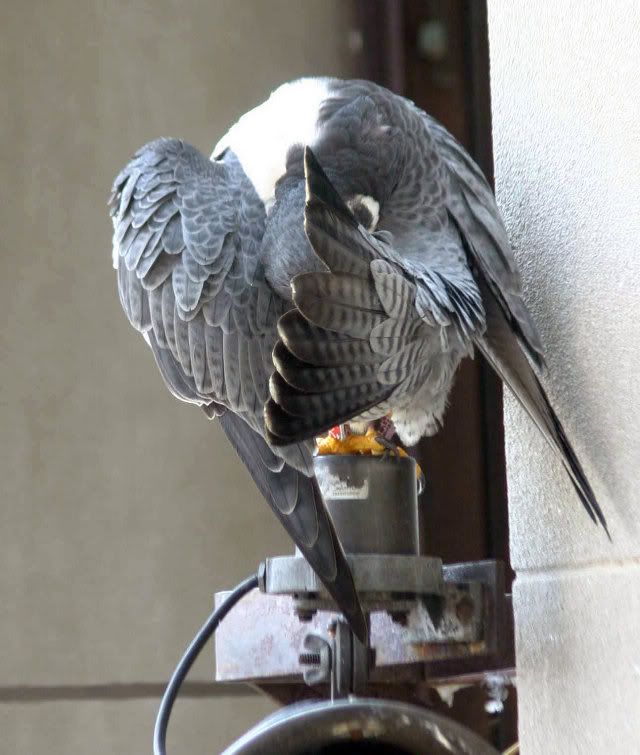
So when watching our beloved Peregrine falcons preening remember how special it is what is happening. Not just being beautiful, and beautiful they are, but taking very good care of feathers, and skin and getting enough vitamine D.


















